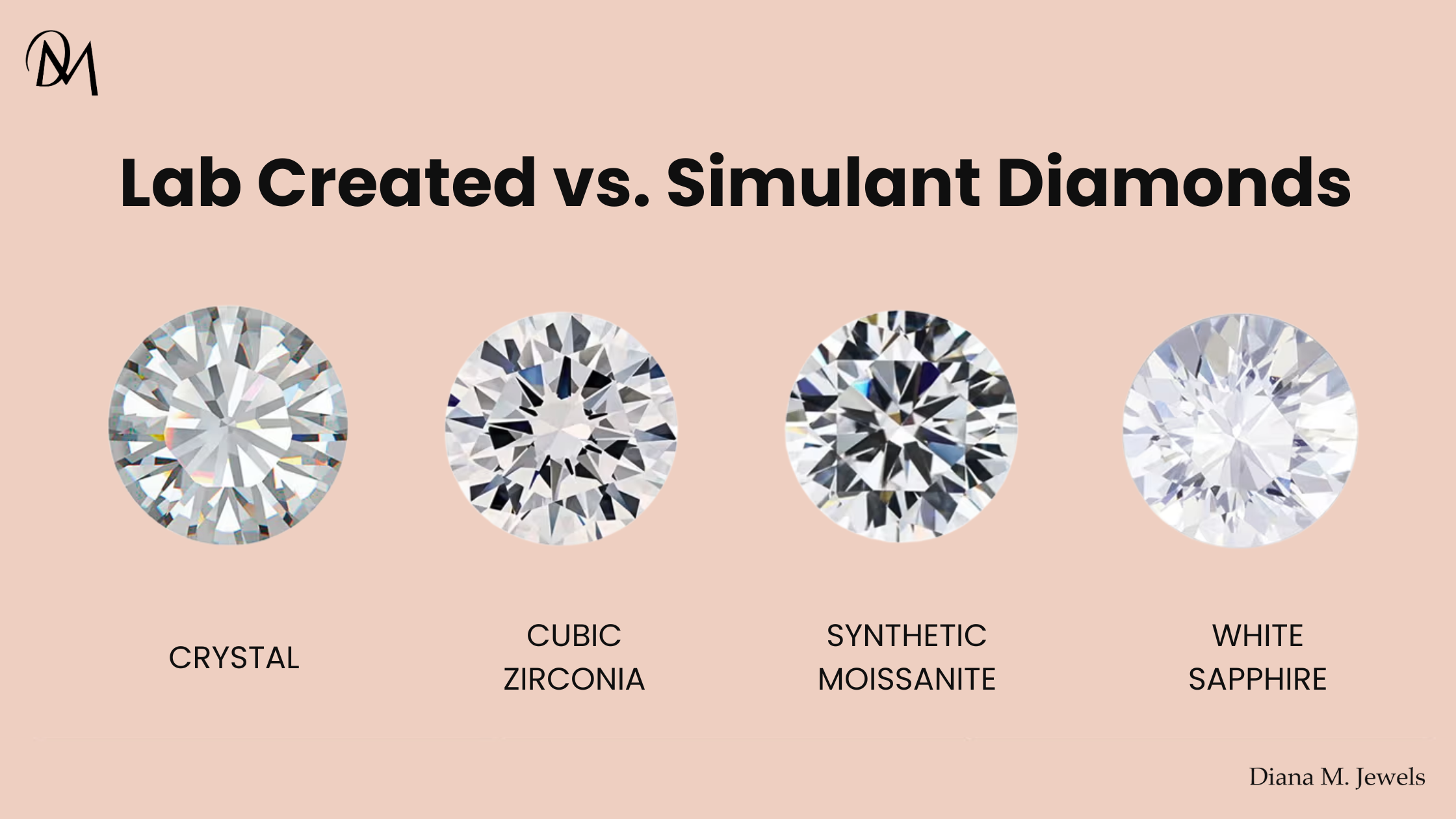
Lab Created Diamonds vs. Simulant Diamonds: What’s the Difference?
In today’s evolving diamond industry, more people are exploring alternatives to natural diamonds for ethical, environmental, and budget-conscious reasons. Two major categories stand out: lab created diamonds and simulant diamonds. While both may appear similar to the untrained eye, they differ drastically in composition, value, brilliance, and durability.
Whether you're asking “what is a simulated diamond” or comparing lab grown diamonds vs cubic zirconia, this guide will clarify every nuance — so you can make an informed, confident purchase.
What Is a Simulated Diamond?
Simulated Diamond Meaning
A simulated diamond is a lookalike stone that mimics the appearance of a real diamond but is not made of carbon and lacks the physical, chemical, and optical properties of a natural or lab-grown diamond.
Simulants are not diamonds. Instead, they are materials like cubic zirconia, moissanite, or white sapphire, manufactured to imitate diamond brilliance.
Common Types of Simulated Diamonds
1. Cubic Zirconia (CZ)
-
Made from zirconium dioxide.
-
Very affordable and visually similar to a diamond.
-
Scores 8–8.5 on the Mohs scale (prone to scratching and clouding).
-
No intrinsic value or resale potential.
2. Moissanite
-
Composed of silicon carbide.
-
Brighter and more fiery than diamonds due to double refraction.
-
Harder than CZ (9.25 Mohs), suitable for daily wear.
-
Still not a diamond, but a popular high-quality simulant.
3. White Sapphire
-
A natural gem, colorless version of sapphire.
-
Durable (9 Mohs) but lacks brilliance compared to diamonds.
Are Simulated Diamonds Real?
No, simulated diamonds are not real diamonds. They’re artificial substitutes that replicate the look but not the composition or durability. They can be beautiful, but they do not have the same status, longevity, or optical precision as actual diamonds.
What Is a Lab-Created Diamond?
Lab-created diamonds — also called lab-grown, man-made, or synthetic diamonds — are real diamonds. They are grown in a lab rather than mined from the Earth, but they have the same chemical, physical, and optical properties as natural diamonds.
How Lab Created Diamonds Are Made
There are two primary methods for growing diamonds:
1. HPHT (High Pressure High Temperature):
-
Mimics natural diamond formation.
-
Carbon is compressed under ~5–6 GPa and heated to ~1,600°C.
-
Produces diamonds often with yellowish or brown hues, but can also be colorless.
2. CVD (Chemical Vapor Deposition):
-
Grows diamonds layer by layer in a vacuum chamber filled with carbon-rich gas.
-
Yields very pure, often colorless diamonds.
-
Allows greater control over clarity and growth.
CVD vs HPHT Diamonds
CVD diamonds are grown layer-by-layer in a carbon-rich gas at low pressure, typically producing higher purity and better color control. HPHT diamonds, in contrast, mimic Earth’s natural conditions with intense heat and pressure, often yielding stones with metallic inclusions. While both are real diamonds, CVD is generally preferred for colorless quality, while HPHT is used to improve or alter color.
Source: GIA – Gemological Institute of America
Lab Grown vs Earth Mined: Are They the Same?
Yes — chemically and optically, lab grown diamonds are identical to earth mined ones. The only difference lies in their origin and price. Lab-grown diamonds are 30–70% more affordable, ethical, and environmentally sustainable.
Are Lab Grown Diamonds the Same as Cubic Zirconia?
No. Lab-grown diamonds are real diamonds, while cubic zirconia is a simulant, lacking diamond properties altogether. CZ is softer, cheaper, and visually distinct under magnification or prolonged wear.
Key Differences: Lab Created Diamonds vs Simulant Diamonds
|
Feature |
Lab-Created Diamond |
Simulant (e.g. CZ, Moissanite) |
|
Composition |
Pure carbon |
Non-carbon materials (ZrO2, SiC) |
|
Hardness (Mohs) |
10 |
CZ: 8.5, Moissanite: 9.25 |
|
Brilliance |
Identical to natural diamond |
Moissanite: rainbow sparkle; CZ: less fire |
|
Durability |
Lifetime |
Moissanite: good; CZ: low |
|
Price |
$$$ (affordable but real) |
$ (very low) |
|
Resale Value |
Low to moderate |
None |
|
Grading |
GIA/IGI certified |
No standard grading |
|
Ethical |
Yes |
Yes |
|
Appearance Over Time |
Stays brilliant |
CZ gets dull/cloudy |
Cubic Zirconia vs Lab Created Diamond: Detailed Comparison
-
Appearance: At a glance, both may sparkle, but CZ lacks the sharp fire of a real diamond.
-
Durability: CZ scratches and clouds quickly. Lab diamonds remain pristine.
-
Price: CZ costs ~$20 per carat. Lab diamonds start around $300–$1000 per carat.
-
Investment: CZ has no resale value. Lab diamonds, while not appreciating, retain limited resale.
Simulated Diamond vs Moissanite vs Lab Diamond
|
Stone |
Visual Sparkle |
Durability |
Cost |
|
Moissanite |
Rainbow, fiery |
9.25 Mohs |
$$ |
|
CZ |
Brilliant at first, fades |
8–8.5 Mohs |
$ |
|
Lab Diamond |
Bright, true white |
10 Mohs |
$$$ |
Verdict:
-
Budget-conscious sparkle? → CZ.
-
Brilliance + toughness without diamond pricing? → Moissanite.
-
Real diamond with value and ethics? → Lab-created diamond.
Common Misconceptions On Lab Created Diamonds & Simulant Diamonds
Are Lab Grown Diamonds the Same as Cubic Zirconia?
No. Lab diamonds are chemically identical to natural diamonds. CZ is a completely different substance and not a diamond at all.
Are Simulated Diamonds Fake?
They aren’t “fake” in a dishonest sense, but they are not diamonds. They’re imitation gemstones.
Is Moissanite a Simulated Diamond?
Yes. Moissanite is a popular diamond simulant, though it's a distinct gemstone.
What Is the Difference Between Simulated and Synthetic Diamonds?
-
Simulated = Imitation appearance, different composition (CZ, Moissanite).
-
Synthetic = Identical to natural diamond, made in a lab (lab-grown).
Are Synthetic Diamonds a Mineral?
Yes. Lab-created diamonds are a mineral form of carbon (same as mined diamonds).
Simulant vs Synthetic vs Lab Diamond: Final Breakdown
-
Simulant: Looks like a diamond, isn’t one (CZ, Moissanite).
-
Synthetic: Real diamond, lab-made.
-
Lab-Created: Synonym for synthetic. Real diamond, just grown above ground.
Note: Many retailers blur these lines. Always ask for certification from a trusted lab like GIA or IGI.
-
How are Lab Grown Diamonds Made? Learn More
Conclusion: Which Diamond Alternative Is Right for You?
-
Want a real, ethical, valuable diamond at a better price? → Lab-Created Diamond
-
Want sparkle without long-term commitment or cost? → Moissanite or CZ
-
Need a forever stone for engagement? → Lab Diamond or Mined Diamond
At DianaM Jewels, we proudly offer certified lab-grown diamonds jewellery that combines beauty, brilliance, and ethics.
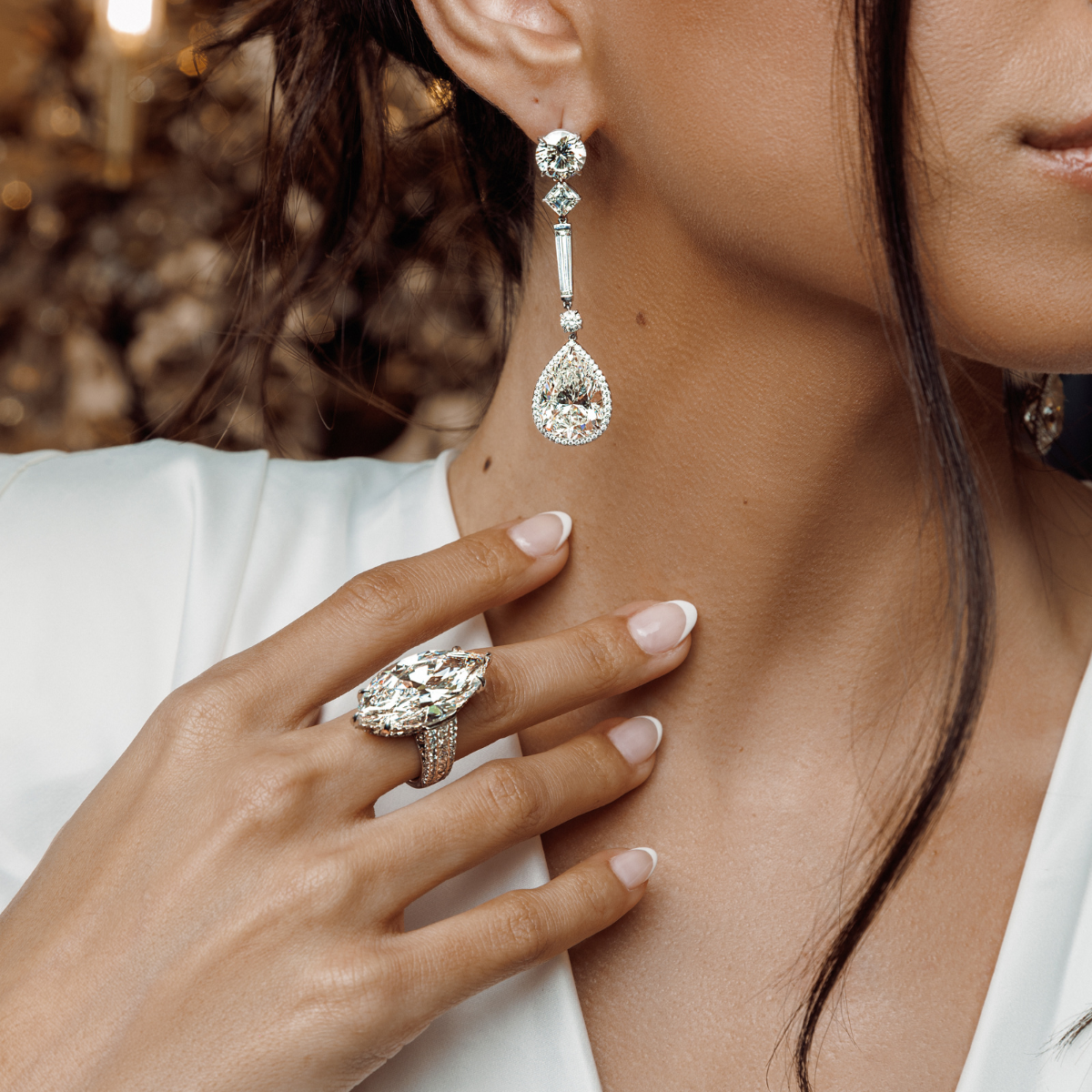
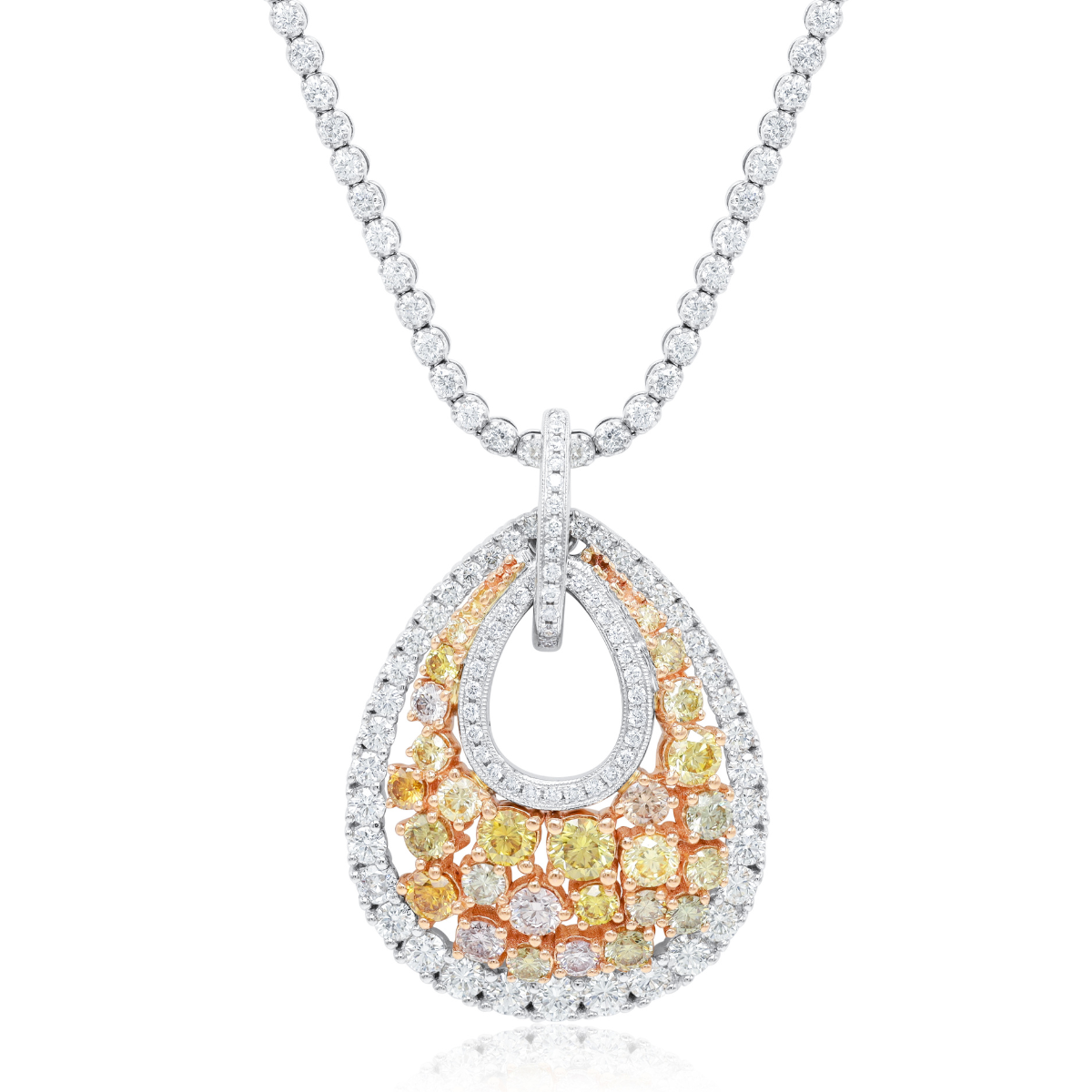
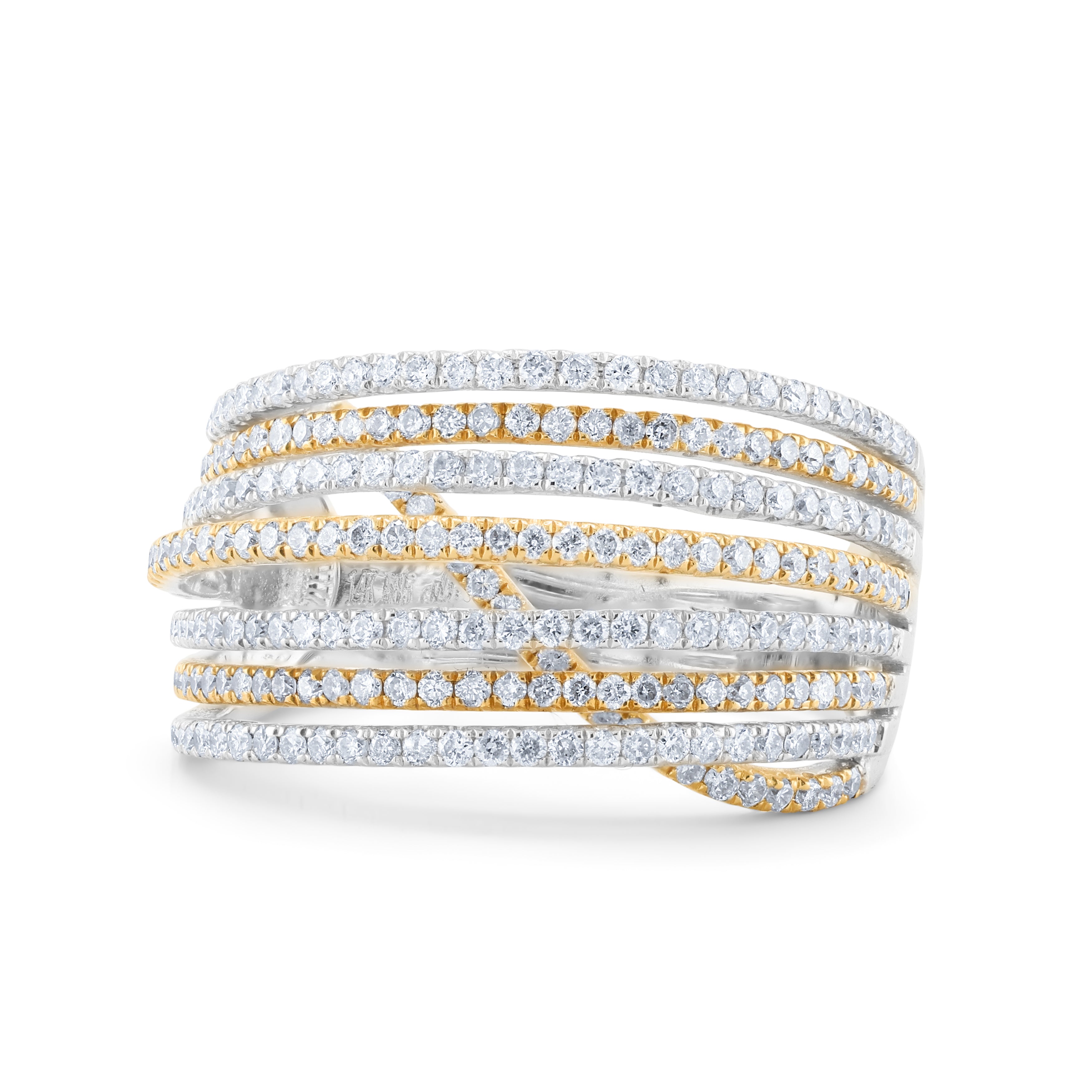
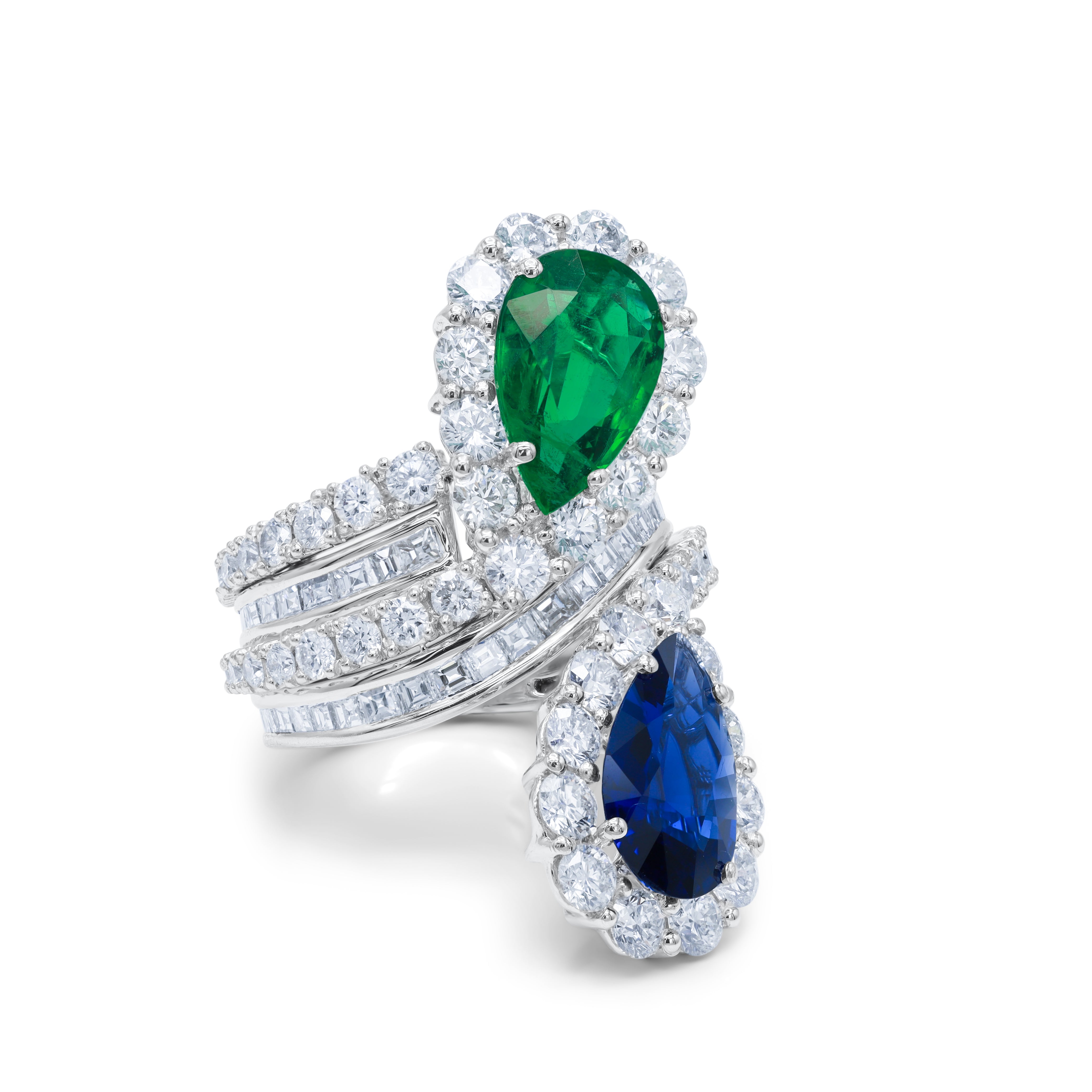

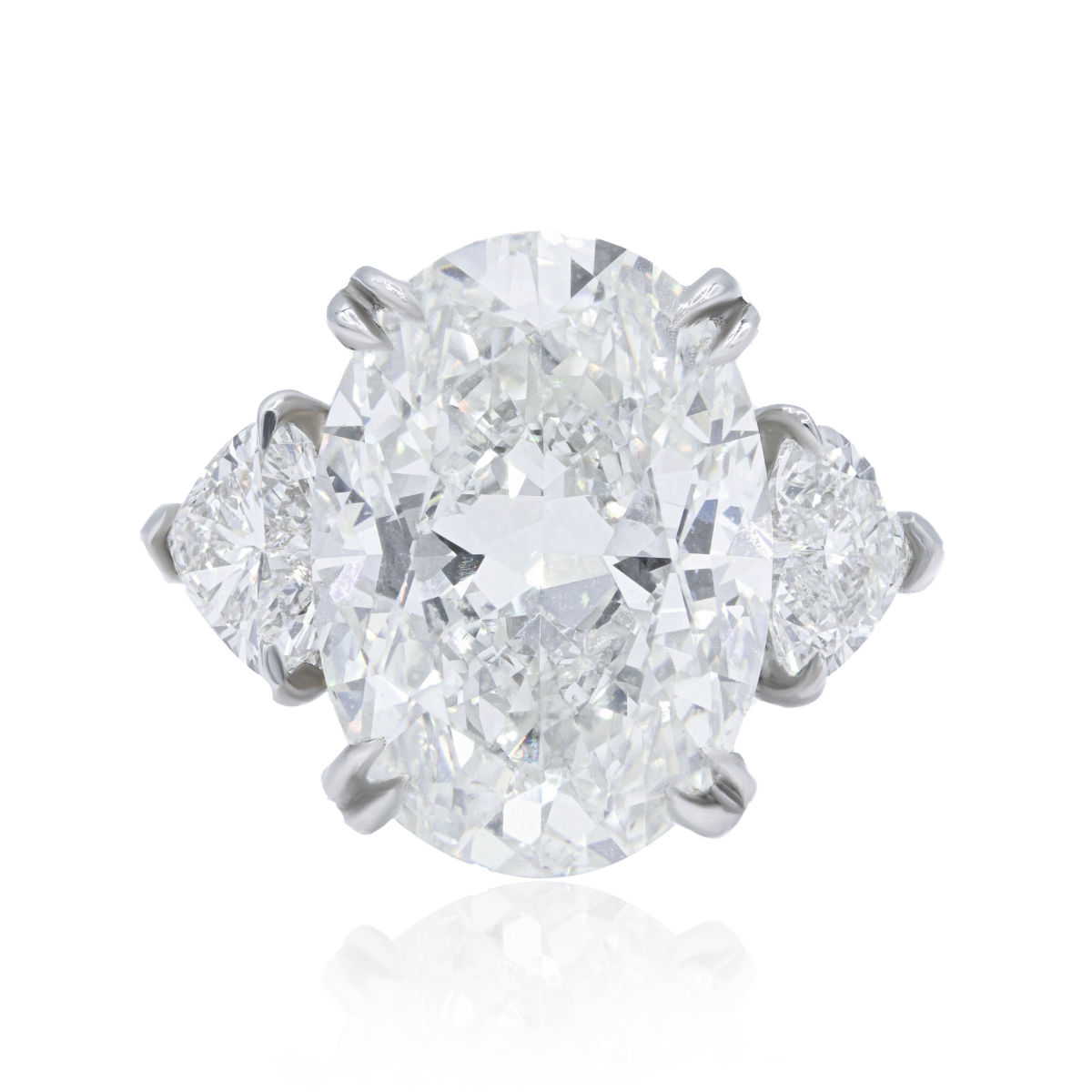
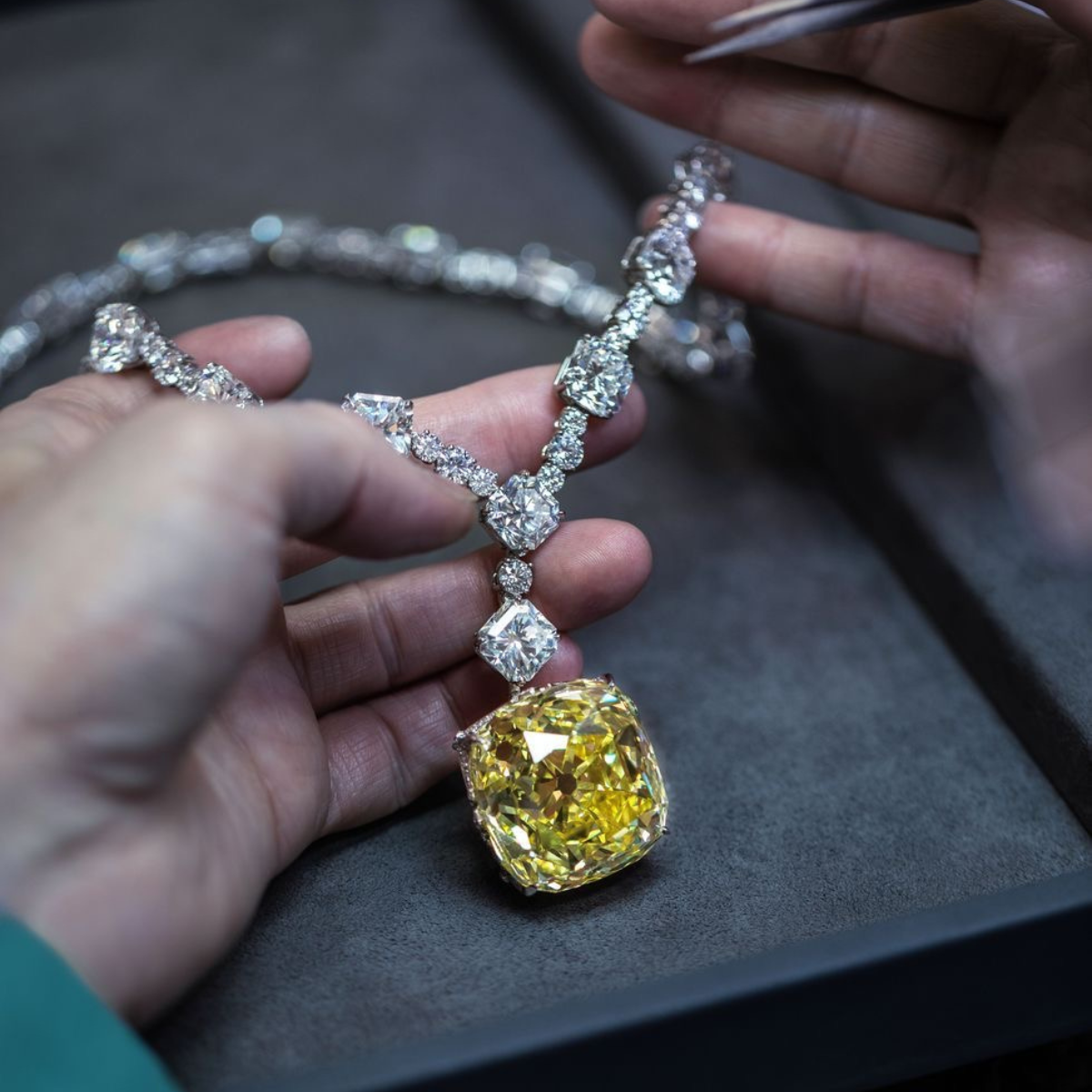
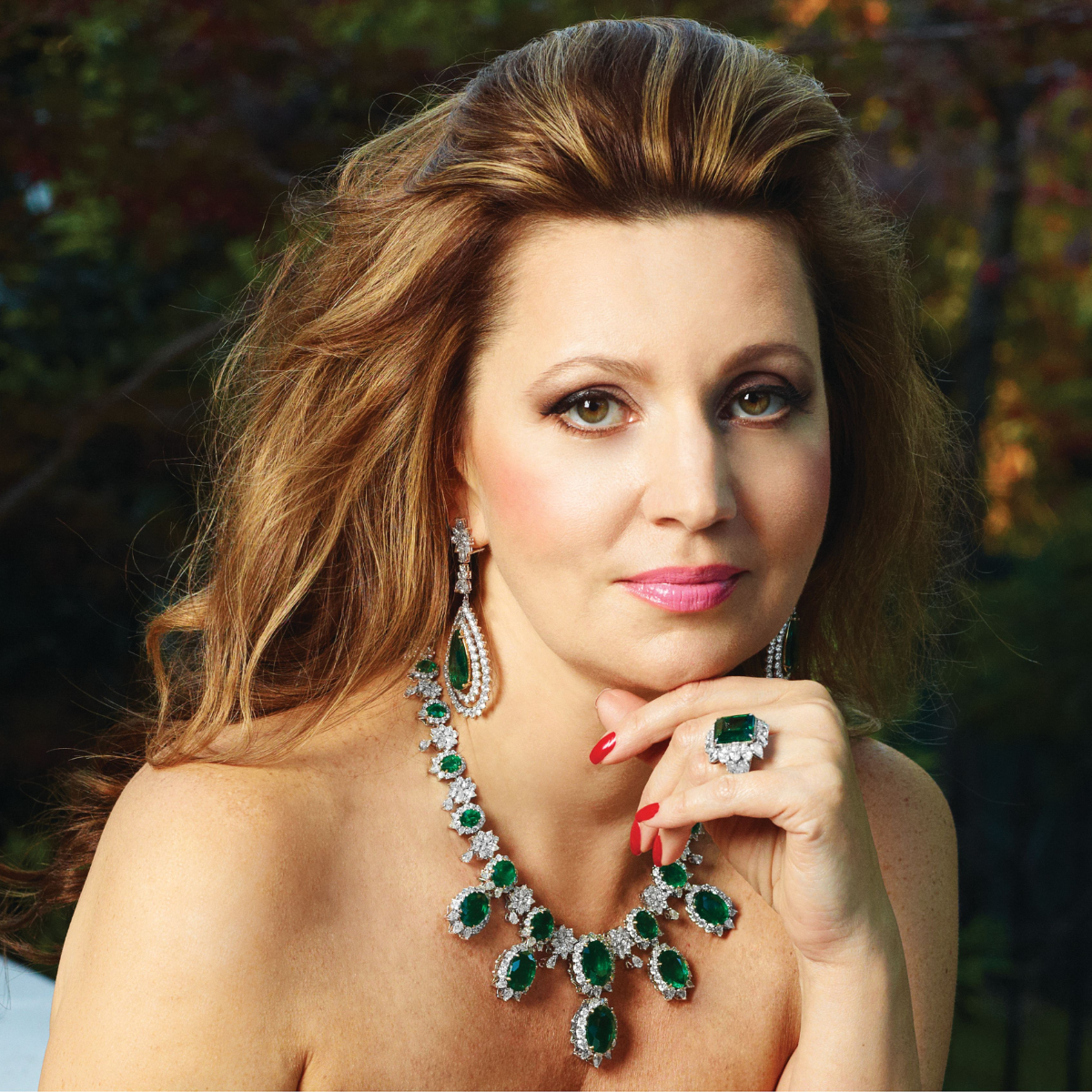

Leave a comment
This site is protected by hCaptcha and the hCaptcha Privacy Policy and Terms of Service apply.